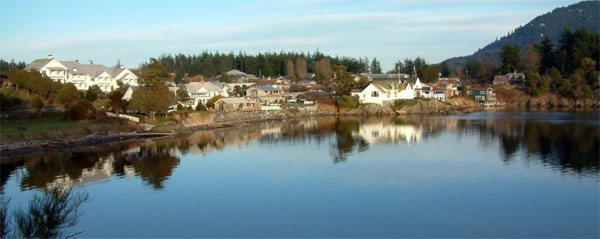— from Tanja Williamson for San Juan County Land Bank —

Results are in from the Islands-Wide Survey about Tourism and Visitor Management in the San Juan Islands. Conducted by Confluence Research and Consulting, the 2019 survey canvassed residents and businesses on a variety of issues related to the impacts of visitors to the islands.
The Confluence results are available in the “news” section of the San Juan County Land Bank website, along with a summary of findings.
The survey was a project of the Terrestrial Managers Group (TMG), a chartered collaborative of local, state, and federal conservation land managers in the County. The research originated out of the desire to better understand the level and kinds of visitation to the County’s natural areas and to give voice to local investment and interests. The results will inform science-based decisions for management of these areas while maintaining the best visitor experiences possible.
“This concludes an effort started in 2015. Taking the results from surveys of visitors, residents, and businesses opinions toward tourism issues, and possible solutions, really gives us some great information to help address stewardship concerns across all public and non-profit conservation lands, for present and future generations,” said Lincoln Bormann, Chair of the TMG and Director of the San Juan County Conservation Land Bank. “We hope the results will be incorporated into forth-coming planning efforts, such as developing a Sustainable Tourism Master Plan, and when making decisions about how the County can retain quality experiences for both locals and visitors.”
**If you are reading theOrcasonian for free, thank your fellow islanders. If you would like to support theOrcasonian CLICK HERE to set your modestly-priced, voluntary subscription. Otherwise, no worries; we’re happy to share with you.**









Since Vacation Rentals are being discussed in public forums,
See page 5, item 6 of the report at the SJ County Land Bank website:
http://sjclandbank.org/wp-content/uploads/2020/02/Tourism-in-the-San-Juan-Islands-Part-IV-conclusions-and-recommendations-v2.pdf
6. Manage growth by managing the accommodation inventory (especially vacation rentals)? The 2018 report included information about accommodation supply, and suggested overnight accommodations tend to drive visitor numbers because day use is a small proportion of total use. In addition, camping and hotel/inn accommodations have been relatively stable in recent years, while vacation rentals appear to be growing at a greater rate and fueling recent tourism increases. More importantly, vacation rentals have the potential to grow much more (from the large inventory of existing “second homes”), and the resident survey suggests that at least a proportion of those
homeowners would consider converting their second homes into vacation rentals.
The surveys suggest that residents, businesses, and at least some visitors recognize that numbers of accommodations have a major influence on tourism impacts, and there appears to be greater interest in limiting VRs than hotels or other accommodation to control tourism growth. General antipathy toward VRs may be related to 1) impacts on real estate markets and affordable housing; 2) perceived noncompliance among VRs regarding registration and/or lodging tax; and 3) concern about how VRs impact
neighborhoods and community livability. These issues are complex, but there is more political support for controlling VRs than managing other types of visitor accommodations.
I read through the entire report. Surprised there is no mention of the increased air noise. There were some days last fall there must’ve been nearly 1 flight every few minutes, and I was told I’m not even on a designated flight path. Not sure what options are available to regulate that, especially if it isn’t an issue for most people.
4. Are the San Juan Islands approaching visitor capacity?
“Very few residents think the islands “can handle more tourists” (6%), and 94% report the islands are at capacity (52%) or over capacity (42%) during the peak summer months.”
@susan shannon; I’m glad you bring up the issue of flight noise and the vastly increased numbers of flights (especially in the past 5 years or so), as it is an issue impacting many people, and as such, should be considered in this or any capacity analysis report. Several things are driving this increase; 1) increased tourism and changing demographic of people who can afford flying instead of taking ferries; 2) the glut and ease of internet purchasing and selling; 3) increased militarization of the area including the building of 36 more EA-18 Growlers for NAS Whidbey; 4) pilots flying off the flight path – ie banking too soon, at too low of an altitude; along with much busier air space with more recreational flying.
Here’s a brochure from the Port of Orcas – the first page top left has a number that can be called about noise complaints. Besides calling the complaint number, there may be some way to log this data, which might be effective in at least including noise in our impact reports (along with light pollution).
An interesting study that IMO should have started being conducted about 10 years ago would be to track hearing loss of those under the flight path and/or directly affected by proximity to airport. There’s a lot of high density housing around the airport, not to mention local businesses that are affected. I wonder how many of us need, or will need, hearing aids because of this.
http://dev.portoforcas.com/wp-content/uploads/2014/01/NoiseAbatementBrochure.pdf